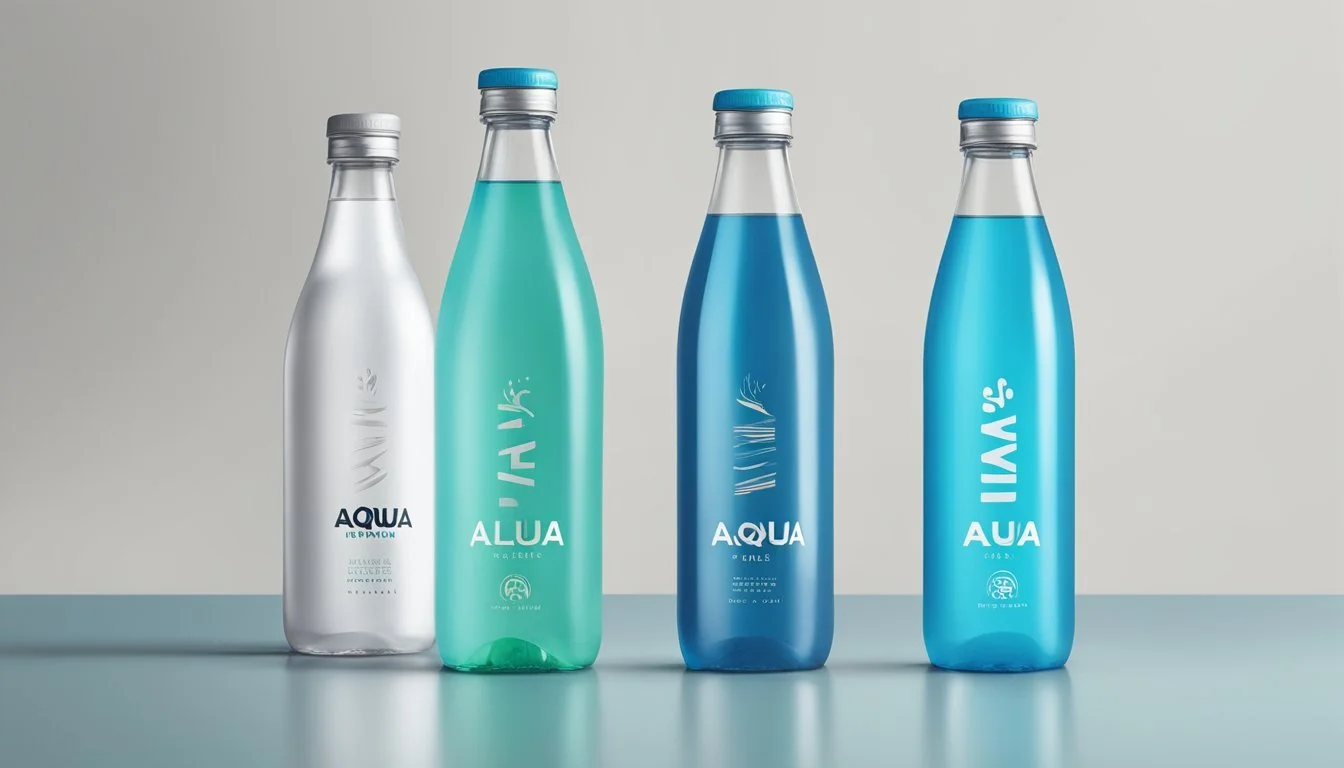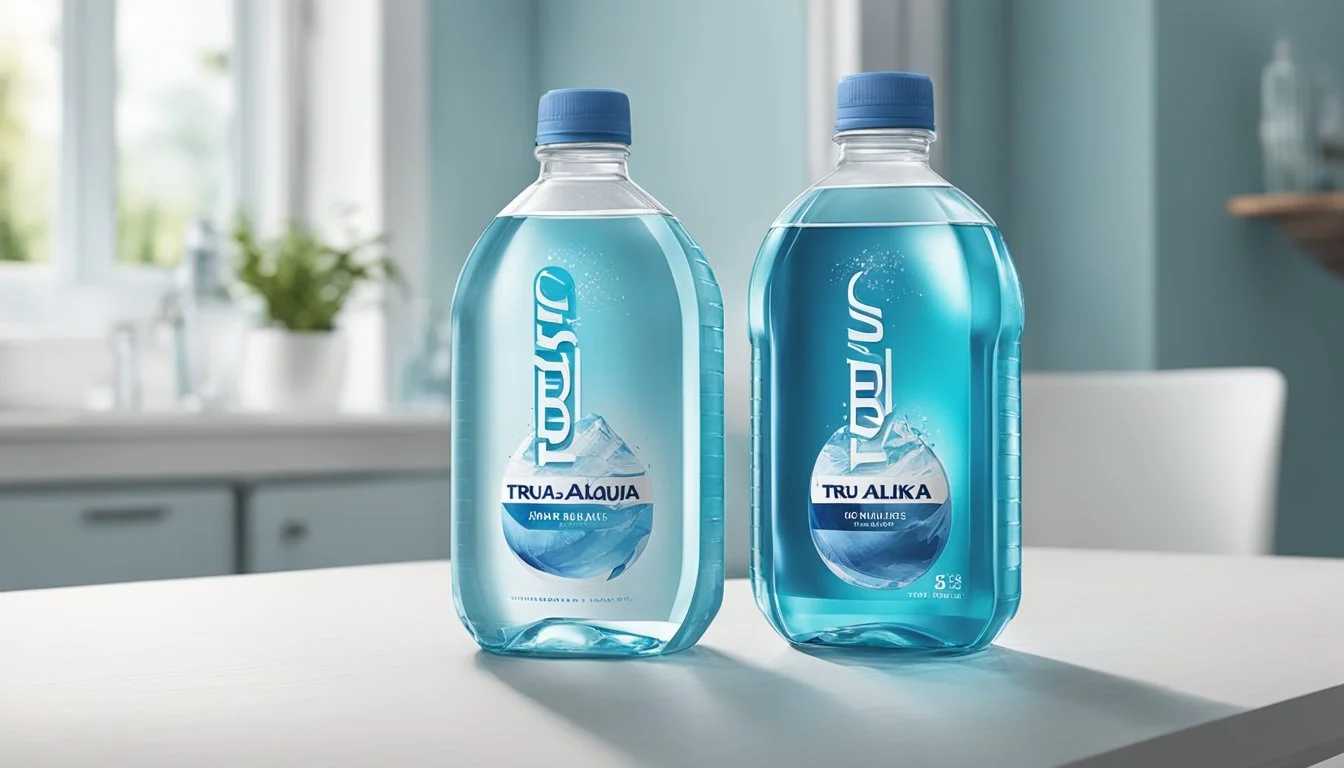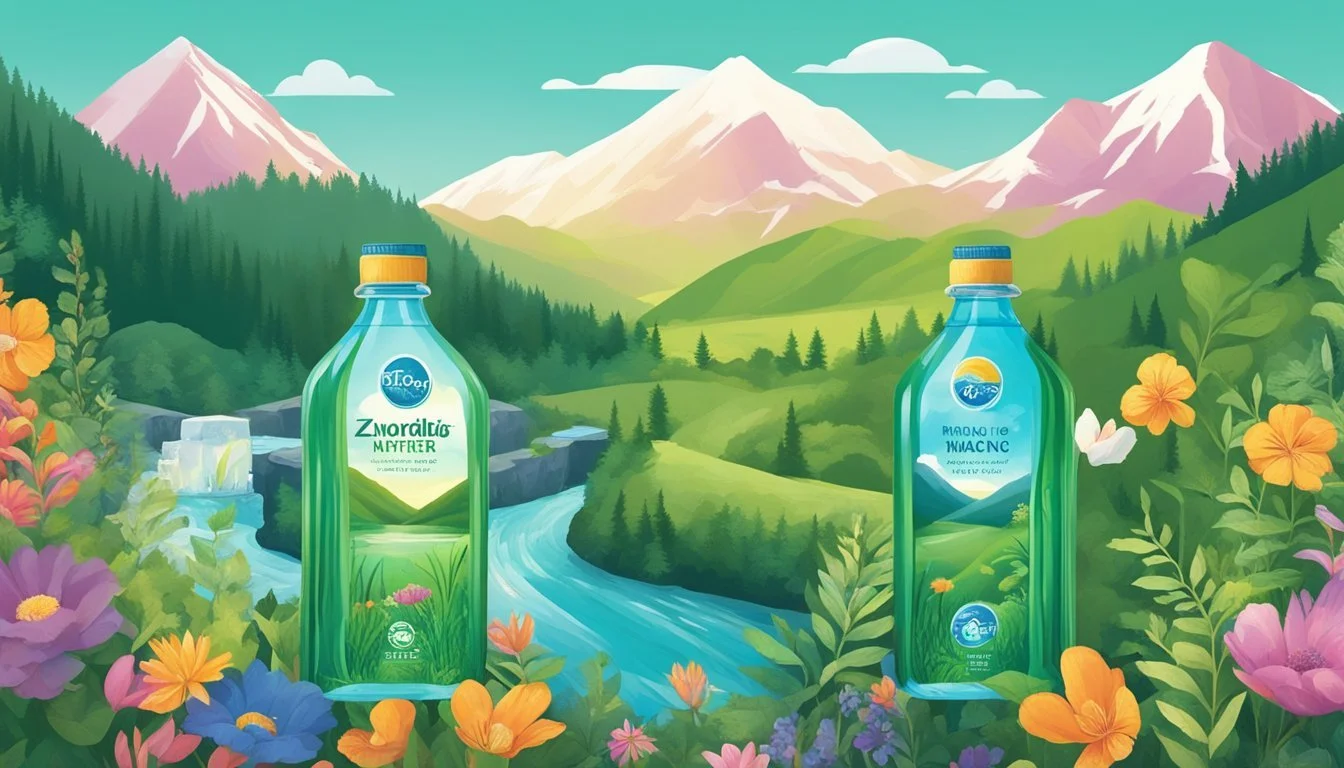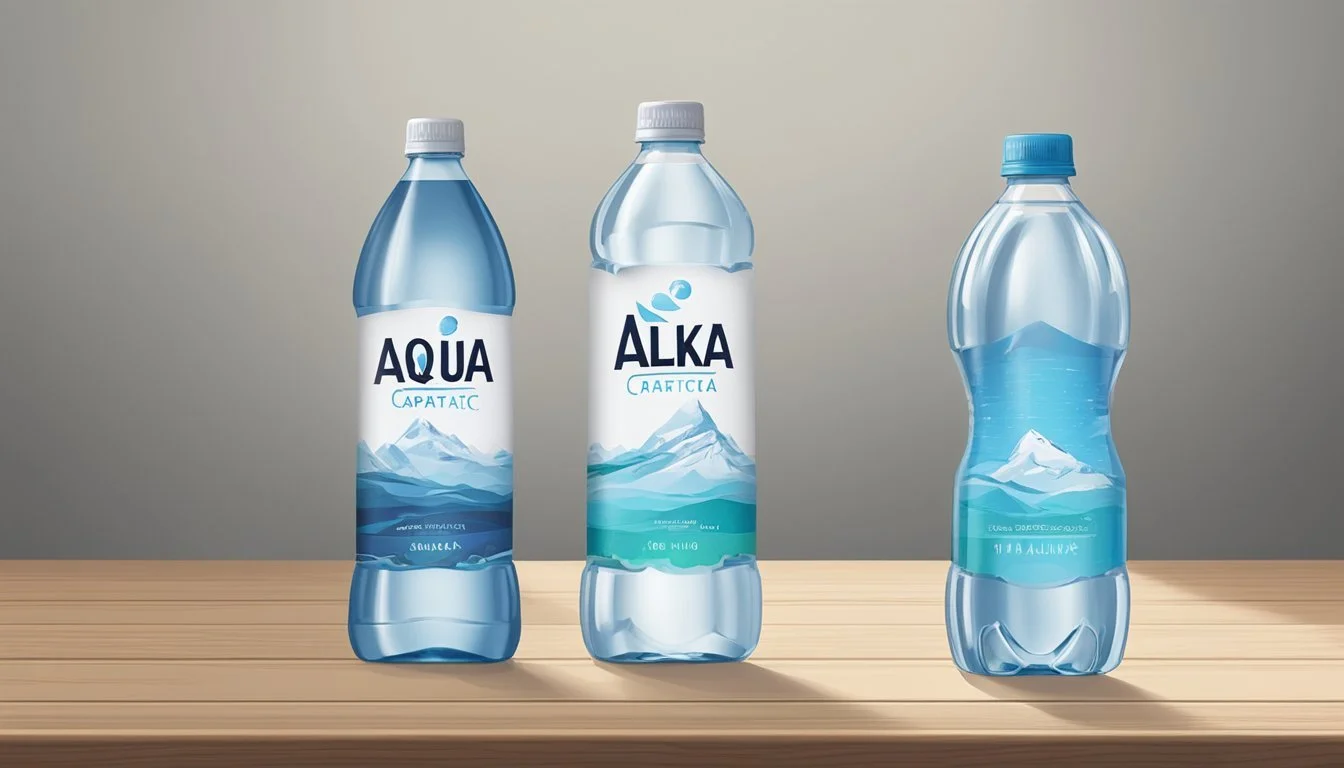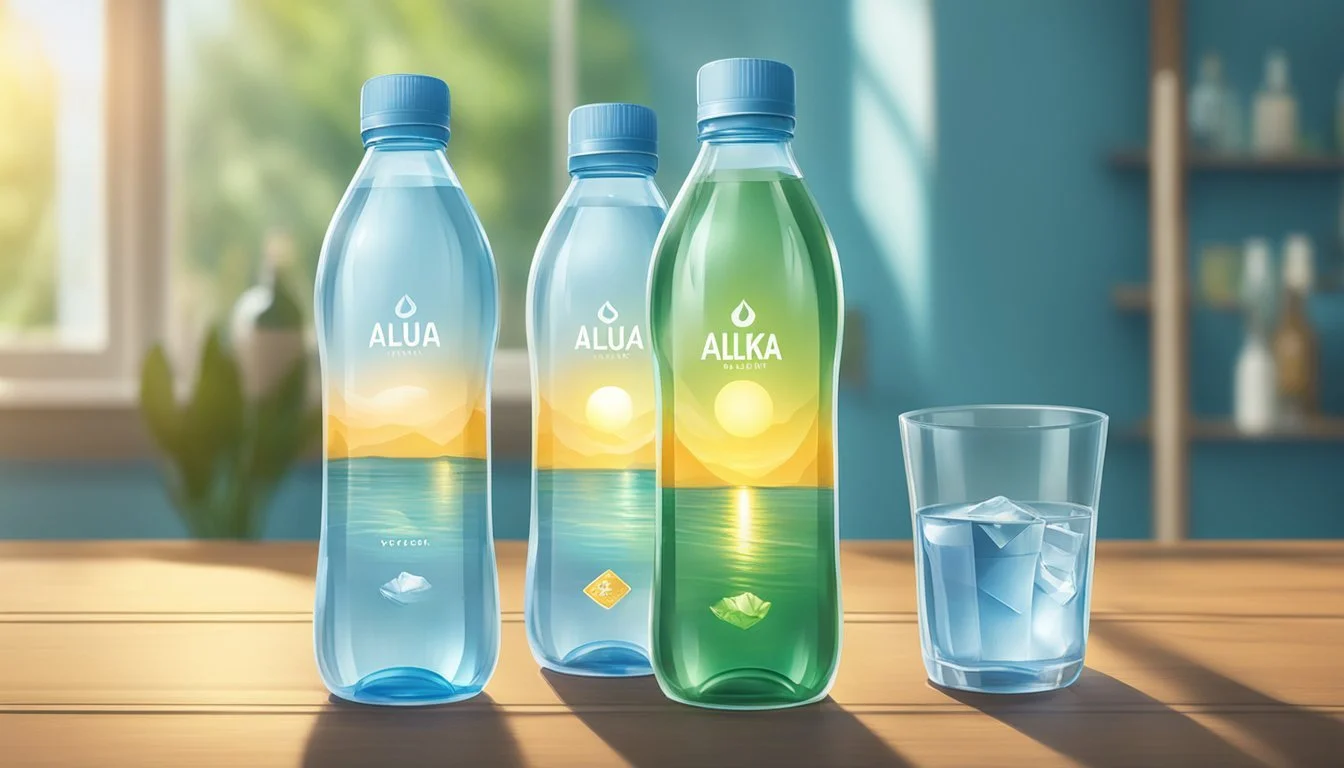Aqua Carpatica vs. Tru Alka
Ultimate Bottled Water Showdown
Choosing the right bottled water can be a daunting task with so many options available. Aqua Carpatica stands out for its nitrate-free benefits and reasonable pricing, making it a popular choice among health-conscious consumers. On the other hand, Tru Alka offers the benefits of alkaline water, which many believe can help balance the body's pH levels.
Aqua Carpatica is particularly noted for its purity, derived from the Carpathian Mountains, and offers both still and sparkling variations. The brand's competitive pricing without sacrificing quality makes it appealing for regular consumption. Tru Alka, meanwhile, prides itself on its high alkaline pH, which is created through a meticulous filtration process.
For those prioritizing purity and natural mineral content, Aqua Carpatica might be the better option. However, if maintaining alkaline intake is the goal, Tru Alka's consistent alkaline levels could be more appealing. Both waters offer unique benefits, catering to different health needs and preferences.
Overview of Bottled Water
Bottled water has become an essential commodity for millions around the world, providing convenience and assurance of quality. This section looks at its historical development and current market presence.
History and Rise of Bottled Water
The history of bottled water dates back centuries, with early records from medicinal springs in Europe. By the 1700s, wealthy Europeans began bottling and selling spring water for its perceived health benefits.
In the USA, commercial bottling began in the mid-1800s. Companies like Poland Spring started distributing water from natural springs. The industry gained momentum in the 1970s and 1980s as concerns about tap water quality grew.
The rise of portable plastic bottles in the late 20th century revolutionized accessibility. Brands utilized natural filtration processes and emphasized purity, aiding the shift from tap water to bottled products.
Bottled Water in the Market
Today, bottled water occupies a dominant position in the beverage market. Consumers have a wide array of choices, including spring water, purified water, and mineral water, each offering unique properties.
Brands like Dasani, Evian, and Aquafina lead the market in the USA. In Romania, brands such as AQUA Carpatica stand out for natural mineral compositions.
The market encompasses both national and international players. Bottled water is marketed based on aspects such as hydration benefits, purity levels, and source credibility. This diversity ensures that bottled water meets varied consumer demands and preferences across different regions.
Profiling Aqua Carpatica
Aqua Carpatica is a bottled water brand that emphasizes purity and mineral content. It is sourced from the Carpathian Mountains and boasts being naturally nitrate-free and protected from chemical contaminants.
Origin and Source
Aqua Carpatica originates from the Carpathian Mountains, a region known for its pristine natural environment. The water is sourced from protected springs, ensuring it remains free from chemical pollutants and contaminants.
The springs are located in areas that are naturally shielded from agricultural and industrial activities. This unique geography contributes to Aqua Carpatica's purity and mineral composition, providing a naturally pure drinking experience.
Mineral Content and Health Benefits
Aqua Carpatica is rich in essential minerals, including magnesium and calcium, making it a healthy choice for consumers. The magnesium content supports muscle and nerve function, while calcium is crucial for bone health.
The water's naturally nitrate-free status adds to its health benefits, as nitrates can pose health risks at high levels. Additionally, it contains low sodium levels, which is beneficial for those monitoring their sodium intake.
Product Range
Aqua Carpatica offers a variety of products to cater to different consumer preferences. The range includes both still and sparkling natural mineral waters, each maintaining the brand's commitment to purity and quality.
The still water is smooth and refreshing, suitable for everyday hydration. The sparkling variant provides a crisp and effervescent alternative for those who prefer a bit of fizz, all while retaining the same mineral benefits.
Profiling Tru Alka
Tru Alka stands out for its focus on high pH levels and advanced purification methods, delivering enhanced drinking water. They offer a variety of bottled water products engineered for health benefits.
Alkaline Water and pH Levels
Tru Alka's water is known for its high pH levels, typically around 9.5 or higher. This alkalinity is believed to help balance the body's pH and promote overall well-being.
The company uses pH testing to ensure quality, which measures the hydrogen ion concentration in the water. Higher pH levels can neutralize acid in the bloodstream, providing potential health benefits such as improved hydration and reduced acid reflux.
Purification and Enhancement
Purification processes at Tru Alka involve several stages, including reverse osmosis. This method removes impurities like heavy metals, bacteria, and chemicals from the water.
To enhance the water, Tru Alka infuses it with essential electrolytes. These minerals, such as potassium, calcium, and magnesium, help improve the taste and provide additional health benefits.
Their proprietary enhancement techniques ensure that each bottle of Tru Alka water is both pure and nutritious, aiming to offer the best in hydration.
Range of Products
Tru Alka offers a wide range of bottled water products, catering to different needs and preferences. Their product lineup includes various bottle sizes from individual servings to larger family-sized containers.
Each product maintains a focus on high pH and enriched with essential electrolytes. By offering diverse packaging options, they make it convenient for consumers to enjoy alkaline water throughout the day.
From portable bottles for on-the-go hydration to larger bottles for home use, Tru Alka ensures there’s a suitable option for every lifestyle.
Comparative Analysis of Water Quality
This section breaks down the primary aspects of water quality by looking at pH balance and alkalinity, mineral composition, and taste and mouthfeel of Aqua Carpatica and Tru Alka.
PH Balance and Alkalinity
Aqua Carpatica emphasizes its naturally occurring pH, which typically ranges between 7.0 and 7.8. This makes it neutral to slightly alkaline. Its pH level is maintained without artificial processes.
Tru Alka, on the other hand, undergoes treatment to achieve a higher pH level. The process involves ionization to reach a pH of 9.5 or higher. This classifies it as alkaline water.
Aqua Carpatica’s natural alkalinity appeals to those seeking unaltered water sources. Tru Alka's enhanced pH is targeted towards consumers looking for alkaline water with high pH for potential health benefits.
Mineral Composition
Aqua Carpatica stands out for its low nitrate content. It also contains essential minerals like calcium and magnesium, adding to its value as natural mineral water. The mineral composition is balanced, supporting daily hydration needs without excessive sodium.
Tru Alka gets its mineral content from electrolytes added post-filtration. This includes key elements such as potassium, calcium, and magnesium. The addition aims to not just replenish but also enhance hydration properties.
Aqua Carpatica’s minerals come directly from its natural source, ensuring a pure mineral composition. Tru Alka focuses on optimizing the mineral content for better hydration.
Taste and Mouthfeel
Aqua Carpatica offers a clean and crisp taste, attributed to its purity and low mineral content. The mouthfeel is fresh, with no aftertaste due to the absence of nitrates and low sodium levels.
Tru Alka’s taste is influenced by the added electrolytes. It has a smoother texture but may have a slightly distinct taste because of the high pH.
Comparatively, Aqua Carpatica provides a more natural drinking experience, while Tru Alka offers a subtly enhanced flavor, catering to different taste preferences. Both waters maintain a refreshing profile but cater to different consumer inclinations through their distinct taste profiles.
Consumer Preferences
Different consumers have diverse preferences when it comes to bottled water, particularly between Aqua Carpatica and Tru Alka. The taste profile and the results of taste tests are crucial factors.
Taste Test Outcomes
Aqua Carpatica has a reputation for having a clean, crisp taste. Many water sommeliers note that its still mineral water and naturally sparkling mineral water both offer a refreshing finish without any aftertaste. This is partly due to its low nitrate levels.
Tru Alka, known for its alkaline properties, tends to have a smoother taste. Consumers often appreciate the higher pH level, which contributes to its slightly sweet finish. Though opinions vary, many find Tru Alka to be less mineral-heavy compared to other brands.
Environmental Impact and Sustainability
Aqua Carpatica and Tru Alka offer distinct approaches to minimizing environmental impact, focusing on their choice of bottle materials and the protection of their natural water sources.
Bottle Materials and Eco-friendliness
Aqua Carpatica uses glass bottles, which are more recyclable and have a lower environmental impact than plastic. Glass does not leach chemicals and can be recycled multiple times without losing quality, reducing waste.
In contrast, Tru Alka opts for plastic bottles that are BPA-free. Though lightweight and convenient, plastic bottles often end up in landfills and can take hundreds of years to decompose. Efforts to use recycled plastic are in place, but the effectiveness is lower compared to glass.
Choosing between these brands depends on whether consumers prioritize recyclability and the absence of harmful chemicals (glass) or convenience and cost-effectiveness (plastic).
Natural Source Protection
Aqua Carpatica sources its water from the Carpathian Mountains, known for pristine, naturally nitrate-free springs. These springs are protected from chemicals and other contaminants, ensuring the purity of the water. The company emphasizes sustainable extraction methods to minimize environmental disruption.
Tru Alka’s water is sourced from various natural springs, ensuring a high-quality product. While specific locations are less highlighted, the company also employs sustainable practices to maintain the ecological balance around its sources.
The commitment to protecting natural water sources is vital for both brands, but Aqua Carpatica’s focus on the Carpathian Mountains and naturally nitrate-free water provides a unique selling point for those concerned about purity and sustainable stewardship.
Consumer Considerations
When selecting between Aqua Carpatica and Tru Alka, consumers often deliberate on cost and availability. These factors are crucial for evaluating the practical value each brand offers.
Cost Comparison
Aqua Carpatica and Tru Alka are priced differently. Aqua Carpatica is generally found to be reasonably priced compared to other premium bottled waters. Meanwhile, Tru Alka tends to be positioned in the higher price range due to its alkaline water properties.
Tru Alka's alkaline properties can make it more appealing to health-conscious consumers, though the high cost might deter some. Aqua Carpatica, known for being nitrate-free and having low sodium levels, also provides good value for its price.
Both brands are available on platforms like Amazon and Ocado, making price comparison easier. Consider checking for discounts or bulk purchasing options to find the best deal.
Availability and Accessibility
Aqua Carpatica and Tru Alka are both widely accessible through online stores such as Amazon and Ocado, making them easy to purchase from the comfort of one's home.
In physical stores, Aqua Carpatica is more frequently found in specialty food stores and health shops. Tru Alka, on the other hand, is often available in health and wellness stores due to its alkaline properties.
Location may influence accessibility. Urban areas typically have better stock levels in both physical and online stores, while rural areas might face limited availability. Online shopping usually compensates for this, providing a convenient alternative.
For international consumers, checking the brand's official website can provide information on local availability and shipping options.
Closing Thoughts
When comparing Aqua Carpatica and Tru Alka, several factors come into play, including purity, pH levels, and cost.
Aqua Carpatica stands out for its nitrate-free benefits. This feature ensures that the water maintains a high level of purity. It's also reasonably priced, making it accessible for daily hydration needs.
Tru Alka, known for its alkaline properties, has a reputation for maintaining a pH level around 9. Its micro-filtration process ensures that impurities are minimized. Those looking for water with higher alkalinity may find Tru Alka to be appealing.
Both brands offer clean, well-packaged products. Aqua Carpatica has received praise for its fresh and pure taste, while Tru Alka is favored for its consistent filtration process.
Personal preferences regarding taste and specific health benefits can heavily influence the choice between the two. For a refreshing, pure experience, Aqua Carpatica remains a strong contender. For those seeking pronounced alkaline properties, Tru Alka may be more suitable.
Each water brand provides unique benefits, from Aqua Carpatica's natural purity to Tru Alka's structured alkalinity. Choosing the right water can depend on individual hydration needs and health considerations.

